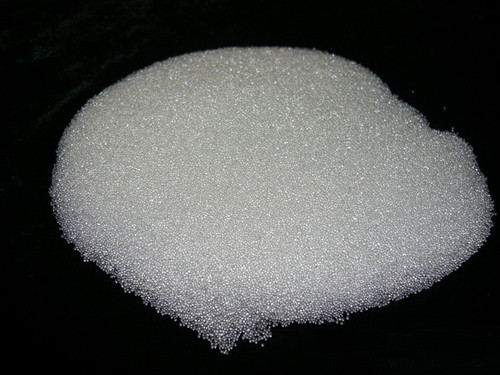During the growth process of rice, it is often caused by disease or insect pests. Correctly determine the cause of rice "heartlessness", timely pesticide control, thereby reducing losses and increasing rice yield.
First, the simple diagnosis of rice "heartlessness" (a) caused by the disease "heartless". Both rice virus disease and bacterial blight can cause rice to be "heartless". The difference between the two is:
1. Bacterial blight: Most of the rice tillering occurs. After the onset, the leaves of the diseased plant or the leaves of the heart leaf 1~2 leaves lose water, curl, dryness and necrosis. Then the other leaves gradually shrink and dry, and finally the leaves of the whole plant die. Take a small piece of fresh diseased leaves and squeeze it in the glass piece. Look at the light, and there is a yellow pus outflow at the vein.
2. Viral disease: The symptoms of dry heart are similar to those caused by Sanhua sputum, but there is no wormhole or worm-like feces on the rice stem. The heart leaf is not easy to pull up, and the leaves are clamped in the glass piece to squeeze the sterile pus.
(2) "Bold heart" caused by pests. According to the pesticide network , the damage to rice caused by Datun, Chilo suppressalis, Sanhuai, and Poria can cause “heartlessnessâ€. The main differences are:
1. Large cockroaches: large wormholes, many worms, and feces are generally placed between the sheath and stem of rice. The stems and sheaths and leaves of the damaged rice turned yellow. The hazard is based on the edge of the paddy field and the middle of the field is lighter.
2. Chilo suppressalis: After hatching, the young clams first clustered on the inner side of the rice sheath and took food. The watery yellow spots appeared on the outside of the injured leaf sheath, and then gradually yellowed and died. When the cub is slightly larger, it will plunge into the rice stem, causing the tip of the flag leaf of the rice to become yellow. In severe cases, the heart leaves die. There are wormholes on the stem of the indica rice, and there are fewer worms outside the hole and more worms in the hole.
3. Sanhua cockroaches: The young cockroaches feed on the heart of the rice, causing the heart to lose water. The vertical volume is like a tube, green and white, commonly known as "fake heart". The curled heart leaves are drawn out, and the visible section is neat. If the mites continue to endanger, bite off the heart and destroy the growth point, then the heart leaves will completely die and become "true heart." The borer of the indica rice is small, there is no insect feces outside the hole, and there are white fine-grained worms in the hole.
4. è¼è›„: The rice plexus is partially or completely bitten from the base, causing the heart of the rice to yellow and die. The damaged rice is easy to pull up, and there is no wormhole on the rice stem, and there is no insect feces. Such dryness is generally apt to occur in rice fields or due to prolonged drought and waterless rice fields.
Second, the rice "dry heart" prevention and control measures 1. The ruthlessness caused by the cockroaches can be used in the rice field, with the use of "trichlorfon" wheat bran and other poisonous cockroaches to attract.
2. For the ruthlessness caused by the locust damage, it can be sprayed with symptomatic insecticides such as “Rui Jinteâ€, “Special Killing†and “Insect Frustrationâ€.
3. In addition to the disinfection of rice seeds, in addition to the disinfection of rice seeds, in the early stage of the onset of bacterial blight, timely application of "Shi Baoling", "Ye Kuining" and other symptomatic agents for prevention and treatment.
4. For the heartache caused by viral diseases, the rice seeds should be soaked with "strong chlorin" before planting rice, and the prevention and control of poisonous insects such as rice planthoppers and spider mites should be done.
AASHTO M247 Glass Beads,we mainly manufactures Drop-on Glass Beads, prermix Glass Beads ,Blasting Glass Beads, Grinding Glass Beads and other reflective glass beads. We can produce micro glass beads for road marking based on the standard of EN1423/1424, AASHTO M247, BS6088, JIS R3301,KS etc. these differents standards can meet different market for the road marking lines and traffic signs.
Reflective Standard Type 1 Glass Beads,AASHTO Tpye 1, Glass Beads, Sand like texture. Same glass beads used on interstate, highway and local traffic lines.Makes paint reflective. Beads are sprinkled on top of the wet while it is still wet at a ratio of 6 pound beads per gallon of paint. roundness >= 80%. Refractive index is >= 1.51.
Retroreflective highway signs and lane markers use special kinds of paints and materials. Most retroreflective paints and other pavement marking materials (PMM) contain many thousands of glass beads per square foot that are bonded to the highway with a strong binder. Instead of scattering light, as normal paints do, retroreflective paints containing glass beads turn the light around and send it back in the direction of your headlights.

AASHTO M247 Glass Beads,AASHTO M247 Reflective Traffic Glass Beads,AASHTO M247 Road Marking Glass Beads,AASHTO M247 Micro Glass Beads
YONGQING BAILUYUAN GLASS PRODUCTS CO.,LTD , http://www.blyglassbeads.com
